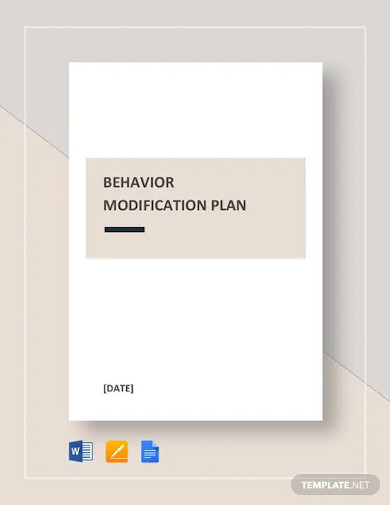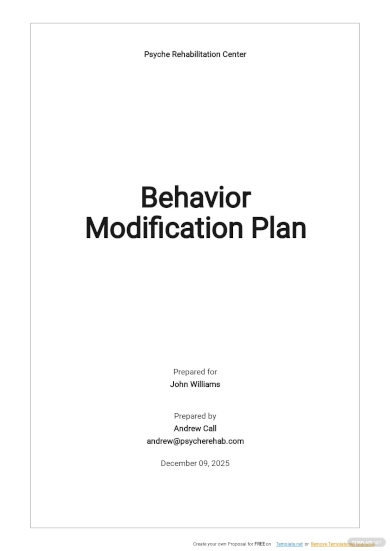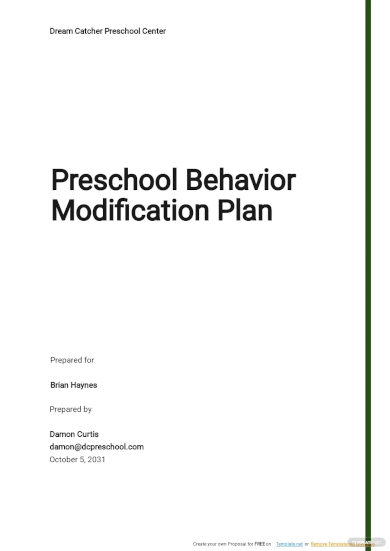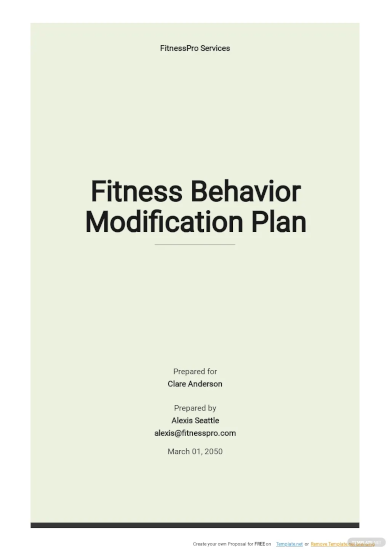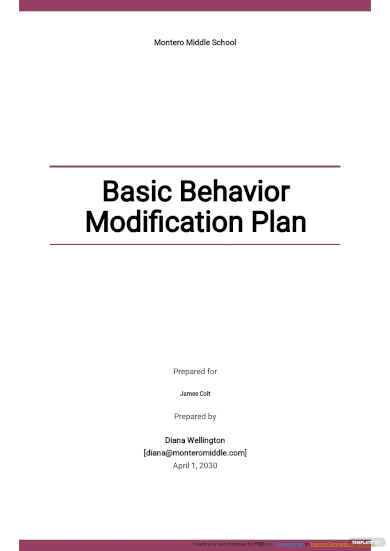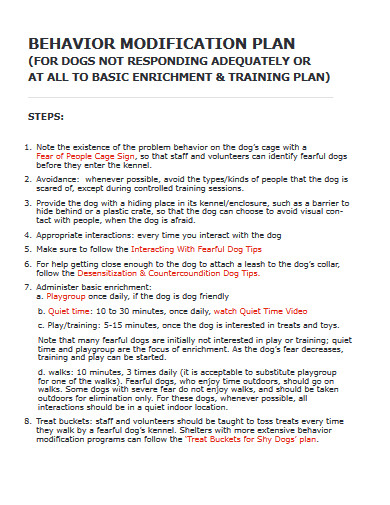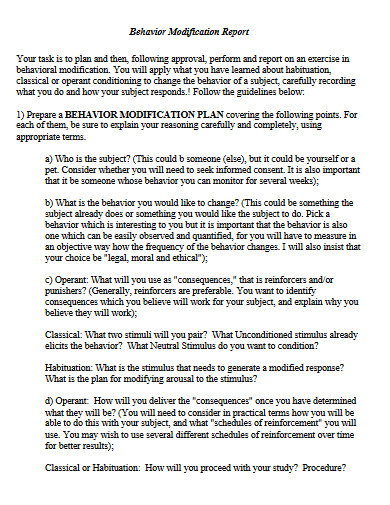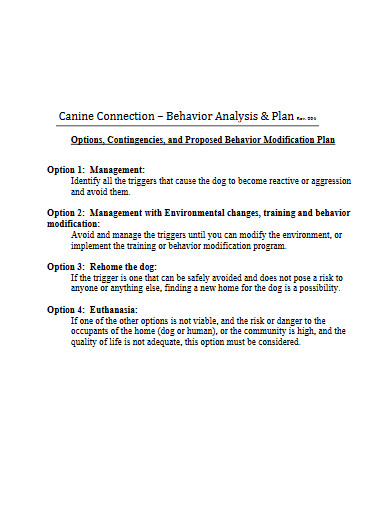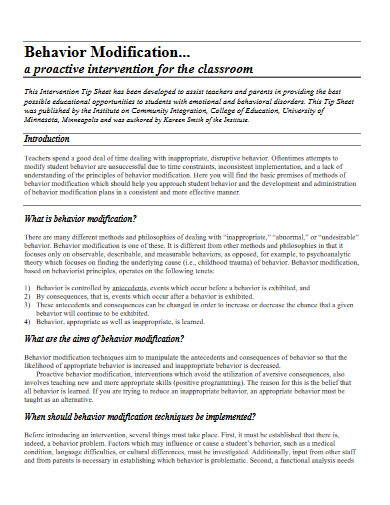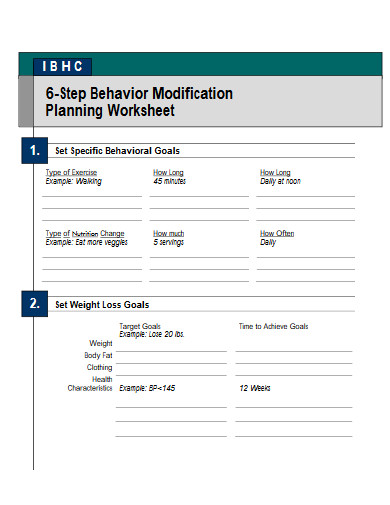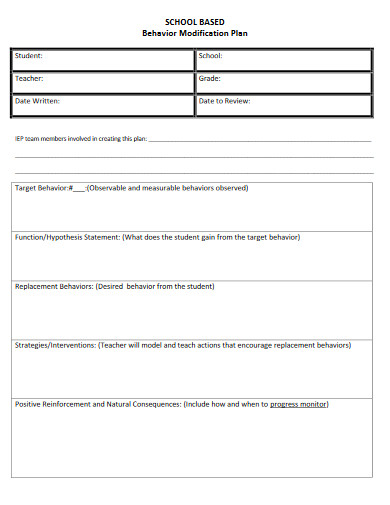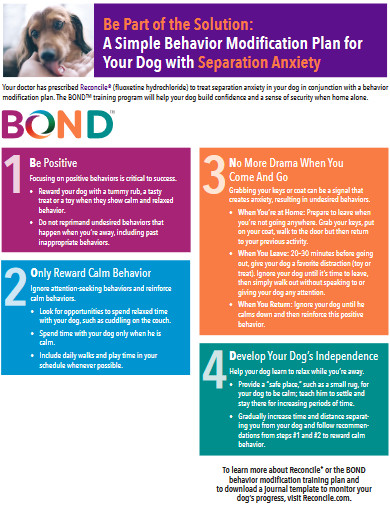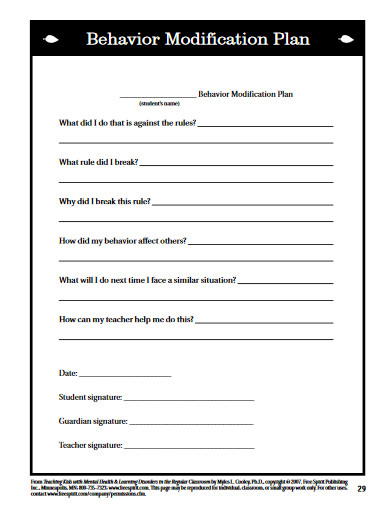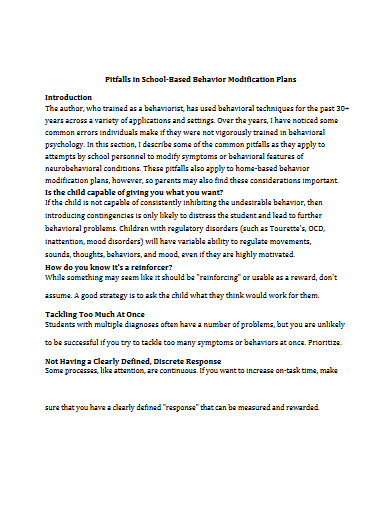14+ Behavior Modification Plan Examples to Download
Not every student in a classroom has the same degree of intellect. In comparison to the rest of the class, some students seem to have more trouble observing the rules. Almost every student can be taught appropriate classroom behavior and become a good student with a little extra effort. There are several resources available to teachers in dealing with misbehaving pupils, but one approach seems to be gaining traction: implementing a behavior plan.
If you want to know more about behavior modification, you can check the following sample templates and tips:
14+ Behavior Modification Plan Examples
1. Behavior Modification Plan Template
2. Simple Behavior Modification Plan Template
3. Preschool Behavior Modification Plan Template
4. Fitness Behavior Modification Plan Template
5. Basic Behavior Modification Plan Template
6. Behavior Modification Plan Example
7. Behavior Modification Report Plan
8. Behavior Modification Plan and Analysis
9. Simple Behavior Modification Plan
10. Behavior Modification Planning Worksheet
11. Student Behavior Modification Plan
12. School Based Behavior Modification Plan
13. Dog Behavior Modification Plan
14. Kids Behavior Modification Plan
15. School Based Behavior Modification Plan in PDF
What Is Behavior Modification Plan?
Can you recall being scolded as a kid? What do you think your parents considering when they did that? It wasn’t that they disliked you and loved seeing you go for a week without television, considering what they felt at the moment. They don’t simply approve of your behavior and hoped that they would not replicate them in the future. It is the best example of behavior therapy in action.
A behavior plan is a form of arrangement between a teacher and a pupil that describes disruptive actions. Once they occur, there will be consequences. Aside from that, it explains what will happen if the student begins to act appropriately in the class. It’s basically a rubric. It outlines correct actions rather than coursework.
How to Use a Behavior Modification Plan?
You can’t make a child change their actions. However, you can always change their environment to allow them to do so. The goal of behavior modification is to adjust your child’s conditions for him or her to obey the rules. To help you on how to use a behavioral modification plan, you can following the steps below.
Step 1: Consider the Child
Every child is unique and reacts differently. Positive feedback works best for some individuals, while negative reinforcement works better for others. You can also take into account the child’s age and maturity level. A little kid is influenced differently from a youth by particular behavior adjustment strategies. Your younger child may respond to your affection or a smile, while your older child may need public recognition for positive reinforcement.
Step 2: Consider the Behaviors You Want to Modify
Changing someone’s behavior might seem complicated. However, if you are diligent in the result you want to achieve, you will succeed. Brushing a child’s teeth before bed requires almost inevitably regular positive reinforcement. But it’s not quite as daunting as helping them to clean their whole room every day, which could require multiple prevention tactics.
Step 3: Consider the Technique That Suits Best
Children respond to behavior management strategies in various ways. Positive reinforcement is very effective for most children. However, in the teenage years, it may be difficult and may necessitate any negative fortification. That’s why you need to pick a behavior modification strategy that is easy to execute so that you will be able to stick to it.
Step 4: Consider a Behaviour Modification Plan
Be wary of self-help books that provide behavior management programs and techniques. Remember that the most effective behavior change plans are tailored to each child individually. Your behavior modification plan must include both protective factors: Consequences that can increase desirable and penalties and consequences that can minimize unwanted behavior. The most natural approach is to use natural or rational outcomes, depending on the type of behavior treatment the child requires.
FAQs:
What are the behavior modification techniques?
There are several techniques that everyone should know about behavior modification. Some of such are the following:
- Negative Reinforcement
- Positive Reinforcement
- Aversion Therapy
- Systematic Desensitization
- Punishment
- Flooding
What are the components of behavior modification?
Behavior therapy employs four main components: constructive punishment, negative punishment, positive reinforcement, and negative reinforcement. These can help in putting an end to bad conduct.
What punishment means in behavior modification?
Punishment is a concept used in operant conditioning to describe any shift that happens following an action that decreases the probability of the behavior that will occur again in the future. Negative feedback is sometimes confused with punishment.
Developing a behavior plan will be an effective way to reintegrate struggling children into the classroom and help them learn and establish with their peers. It’s also a wise way to reduce disruptive attitudes in the study room over time. When behavior plans are no correct, the classroom may become a more pleasant place to learn for all students. The given templates and tips can help you in molding your students to be better children.



